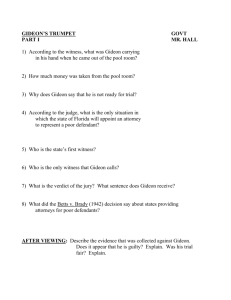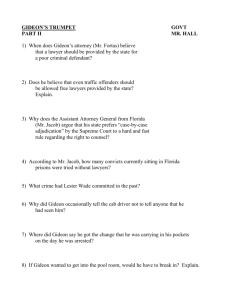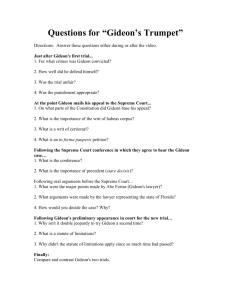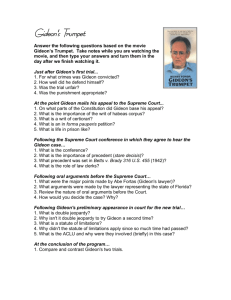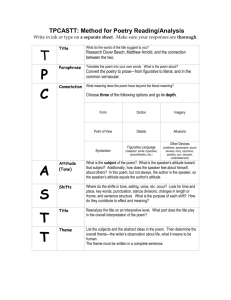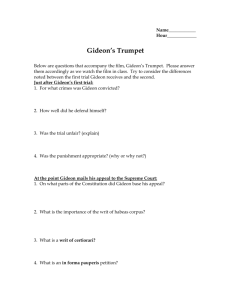Senior Paper Writing Examples: Section One, Literary Analysis
advertisement
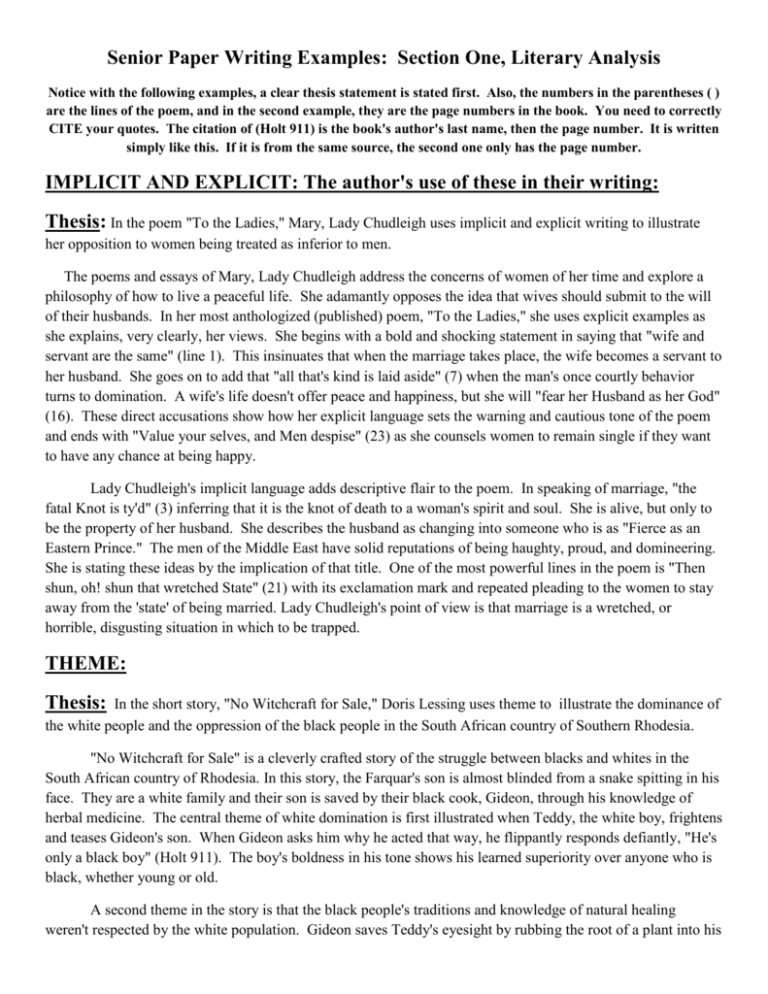
Senior Paper Writing Examples: Section One, Literary Analysis Notice with the following examples, a clear thesis statement is stated first. Also, the numbers in the parentheses ( ) are the lines of the poem, and in the second example, they are the page numbers in the book. You need to correctly CITE your quotes. The citation of (Holt 911) is the book's author's last name, then the page number. It is written simply like this. If it is from the same source, the second one only has the page number. IMPLICIT AND EXPLICIT: The author's use of these in their writing: Thesis: In the poem "To the Ladies," Mary, Lady Chudleigh uses implicit and explicit writing to illustrate her opposition to women being treated as inferior to men. The poems and essays of Mary, Lady Chudleigh address the concerns of women of her time and explore a philosophy of how to live a peaceful life. She adamantly opposes the idea that wives should submit to the will of their husbands. In her most anthologized (published) poem, "To the Ladies," she uses explicit examples as she explains, very clearly, her views. She begins with a bold and shocking statement in saying that "wife and servant are the same" (line 1). This insinuates that when the marriage takes place, the wife becomes a servant to her husband. She goes on to add that "all that's kind is laid aside" (7) when the man's once courtly behavior turns to domination. A wife's life doesn't offer peace and happiness, but she will "fear her Husband as her God" (16). These direct accusations show how her explicit language sets the warning and cautious tone of the poem and ends with "Value your selves, and Men despise" (23) as she counsels women to remain single if they want to have any chance at being happy. Lady Chudleigh's implicit language adds descriptive flair to the poem. In speaking of marriage, "the fatal Knot is ty'd" (3) inferring that it is the knot of death to a woman's spirit and soul. She is alive, but only to be the property of her husband. She describes the husband as changing into someone who is as "Fierce as an Eastern Prince." The men of the Middle East have solid reputations of being haughty, proud, and domineering. She is stating these ideas by the implication of that title. One of the most powerful lines in the poem is "Then shun, oh! shun that wretched State" (21) with its exclamation mark and repeated pleading to the women to stay away from the 'state' of being married. Lady Chudleigh's point of view is that marriage is a wretched, or horrible, disgusting situation in which to be trapped. THEME: Thesis: In the short story, "No Witchcraft for Sale," Doris Lessing uses theme to illustrate the dominance of the white people and the oppression of the black people in the South African country of Southern Rhodesia. "No Witchcraft for Sale" is a cleverly crafted story of the struggle between blacks and whites in the South African country of Rhodesia. In this story, the Farquar's son is almost blinded from a snake spitting in his face. They are a white family and their son is saved by their black cook, Gideon, through his knowledge of herbal medicine. The central theme of white domination is first illustrated when Teddy, the white boy, frightens and teases Gideon's son. When Gideon asks him why he acted that way, he flippantly responds defiantly, "He's only a black boy" (Holt 911). The boy's boldness in his tone shows his learned superiority over anyone who is black, whether young or old. A second theme in the story is that the black people's traditions and knowledge of natural healing weren't respected by the white population. Gideon saves Teddy's eyesight by rubbing the root of a plant into his eyes after he, Gideon, had chewed it up. Except for in this dire circumstance, the white people would never have respected a natural remedy such as this. The story states, "But Mrs. Farquar was weeping with terror, and she could hardly thank him: It was impossible to believe that Teddy could keep his sight" (912). An interesting twist in the story comes with the introduction of a third theme of the idea of the black people gaining more power. After the story of Teddy's restored eyesight spreads throughout the towns, a scientist comes to acquire the secret of the cure. Gideon feels that his knowledge is being exploited and is insulted by his newfound position of respect. He takes quite a bit of convincing to 'cooperate' with the white people. He agrees to cooperate, but makes the group walk for hours. He seems to be enjoying the control he has over the others. After their wild goose chase, "Gideon suddenly decided they had had enough; or perhaps his anger evaporated at that moment" (914). He casually picks a handful of blue flowers, leaving the people wondering if this were the real plant or not. He never divulges the identity of the real plant, for that would be an insult to his culture. His silence is his only power. The themes of the story, "No Witchcraft for Sale" are wonderful illustrations of the struggle between the black and white people of South African countries. These unfair ideas were deeply rooted and difficult to change. RESEARCH TOPIC: Remember, the second part of your paper is to be a research section that connects with your story. Be thinking what some good possibilities are for topics. A good research topic to go along with "No Witchcraft for Sale," would be to find out more about the Rhodesian civil war. This story was written in 1964, and Southern Rhodesia declared its independence from Britain in 1965. It became the country of Zimbabwe in 1980. (I read about this in a little paragraph on the Before You Read page before the story.) IDEAS FOR YOUR FIRST SECTION: l. The author's use of implicit and explicit examples 2. Themes 3. Symbolism 4. Use of Literary Elements such as simile, metaphor, alliteration, personification, connotation etc. 5. Parody 6. Allegory 7. Structure, such as frame story 8. Irony Not all of these apply to every story. Go back and reread the Before You Read page that comes before the story or essay to get some other ideas. The first section is due, handwritten, at the end of class on Monday, March 15 for B-Day, and Tuesday, March 16 for A-Day.
